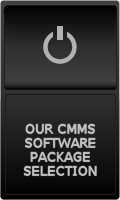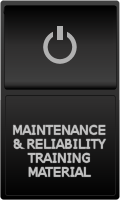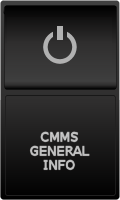Enquiry Form
Submit the form or
Electrician Training - A Systematic Approach to Trouble shooting and Electrical Fault Finding
By Warren Rhude, president of Simutech Multimedia Inc.
To expertly troubleshoot electrical equipment, problems must be solved by replacing only defective equipment or components in the least amount of time. One of the most important factors in doing this, is the approach used. An expert troubleshooter uses a system or approach that allows them to logically and systematically analyze a circuit and determine exactly what is wrong.
 The approach described here is a logical, systematic approach
called the 5 Step Troubleshooting Approach. It is a proven process that
is highly effective and reliable in helping to solve electrical problems.
The approach described here is a logical, systematic approach
called the 5 Step Troubleshooting Approach. It is a proven process that
is highly effective and reliable in helping to solve electrical problems.
This approach differs from troubleshooting procedures in that it does not tell you step by step how to troubleshoot a particular kind of circuit. It is more of a thinking process that is used to analyze a circuit’s behavior and determine what component or components are responsible for the faulty operation. This approach is general in nature allowing it to be used on any type of electrical circuit.
In fact, the principles covered in this approach can be applied to many other types of problem solving scenarios, not just electrical circuits.
Electrical Troubleshooting Approach
The 5 Step Troubleshooting Approach consists of the following:
- Preparation Step 1
- Observation Step 2
- Define Problem Area Step 3
- Identify Possible Causes Step 4
- Determine Most Probable Cause Step
- 5 Test and Repair (then follow up)
Let’s take a look at these in more detail.
Preparation
Before you begin to troubleshoot any piece of equipment, you must be familiar
with your organization’s safety rules and procedures for working
on electrical equipment. These rules and procedures govern the methods
you can use to troubleshoot electrical equipment (including your lockout/tagout
procedures, testing procedures etc.) and must be followed while troubleshooting.
Next, you need to gather information regarding the equipment and the problem. Be sure you understand how the equipment is designed to operate. It is much easier to analyze faulty operation when you know how it should operate. Operation or equipment manuals and drawings are great sources of information and are helpful to have available. If there are equipment history records, you should review them to see if there are any recurring problems. You should also have on-hand any documentation describing the problem. (i.e., a work order, trouble report, or even your notes taken from a discussion with a customer.)
Step 1 – Observe
Most faults provide obvious clues as to their cause. Through careful
observation and a little bit of reasoning, most faults can be identified
as to the actual component with very little testing. When observing malfunctioning
equipment, look for visual signs of mechanical damage such as indications
of impact, chafed wires, loose components or parts laying in the bottom of
the cabinet. Look for signs of overheating, especially on wiring, relay coils,
and printed circuit boards.
Don't forget to use your other senses when inspecting equipment. The smell of burnt insulation is something you won't miss. Listening to the sound of the equipment operating may give you a clue to where the problem is located. Checking the temperature of components can also help find problems but be careful while doing this, some components may be alive or hot enough to burn you.
Pay particular attention to areas that were identified either by past history or by the person that reported the problem. A note of caution here! Do not let these mislead you, past problems are just that – past problems, they are not necessarily the problem you are looking for now. Also, do not take reported problems as fact, always check for yourself if possible. The person reporting the problem may not have described it properly or may have made their own incorrect assumptions.
When faced with equipment which is not functioning properly you should:
- Be sure you understand how the equipment is designed to operate. It makes it much easier to analyze faulty operation when you know how it should operate;
- Note the condition of the equipment as found. You should look at the state of the relays (energized or not), which lamps are lit, which auxiliary equipment is energized or running etc. This is the best time to give the equipment a thorough inspection (using all your senses). Look for signs of mechanical damage, overheating, unusual sounds, smells etc.;
- Test the operation of the equipment including all of its features. Make note of any feature that is not operating properly. Make sure you observe these operations very carefully. This can give you a lot of valuable information regarding all parts of the equipment.
Step 2 – Define Problem Area
It is at this stage that you apply logic and reasoning to your observations
to determine the problem area of the malfunctioning equipment. Often
times when equipment malfunctions, certain parts of the equipment will
work properly while others not.
The key is to use your observations (from step 1) to rule out parts of the equipment or circuitry that are operating properly and not contributing to the cause of the malfunction. You should continue to do this until you are left with only the part(s) that if faulty, could cause the symptoms that the equipment is experiencing.
To help you define the problem area you should have a schematic diagram of the circuit in addition to your noted observations.
Starting with the whole circuit as the problem area, take each noted observation and ask yourself "what does this tell me about the circuit operation?" If an observation indicates that a section of the circuit appears to be operating properly, you can then eliminate it from the problem area. As you eliminate each part of the circuit from the problem area, make sure to identify them on your schematic. This will help you keep track of all your information.
Step 3 – Identify Possible Causes
Once the problem area(s) have been defined, it is necessary to identify
all the possible causes of the malfunction. This typically involves every
component in the problem area(s). It is necessary to list (actually write
down) every fault which could cause the problem no matter how remote
the possibility of it occurring. Use your initial observations to help
you do this. During the next step you will eliminate those which are
not likely to happen.
Step 4 – Determine Most Probable Cause
Once the list of possible causes has been made, it is then necessary to
prioritize each item as to the probability of it being the cause of the
malfunction. The following are some rules of thumb when prioritizing
possible causes.
Although it could be possible for two components to fail at the same time, it is not very likely. Start by looking for one faulty component as the culprit. The following list shows the order in which you should check components based on the probability of them being defective:
- First look for components which burn out or have a tendency to wear out, i.e. mechanical switches, fuses , relay contacts, or light bulbs. (Remember, that in the case of fuses, they burn out for a reason. You should find out why before replacing them.)
- The next most likely cause of failure are coils, motors, transformers and other devices with windings. These usually generate heat and, with time, can malfunction.
- Connections should be your third choice, especially screw type or bolted type. Over time these can loosen and cause a high resistance. In some cases this resistance will cause overheating and eventually will burn open. Connections on equipment that is subject to vibration are especially prone to coming loose.
- Finally, you should look for is defective wiring. Pay particular attention to areas where the wire insulation could be damaged causing short circuits. Don't rule out incorrect wiring, especially on a new piece of equipment.
Step 5 – Test and Repair
Testing electrical equipment can be hazardous. The electrical energy contained
in many circuits can be enough to injure or kill. Make sure you follow
all your companies safety precautions, rules and procedures while troubleshooting.
Once you have determined the most probable cause, you must either prove it to be the problem or rule it out. This can sometimes be done by careful inspection however, in many cases the fault will be such that you cannot identify the problem component by observation and analysis alone. In these circumstances, test instruments can be used to help narrow the problem area and identify the problem component.
There are many types of test instruments used for troubleshooting. Some are specialized instruments designed to measure various behaviors of specific equipment, while others like the multimeters are more general in nature and can be used on most electrical equipment. A typical multimeter can measure AC and DC Voltages, Resistance, and Current.
A very important rule when taking meter readings is to predict what the meter will read before taking the reading. Use the circuit schematic to determine what the meter will read if the circuit is operating normally. If the reading is anything other than your predicted value, you know that this part of the circuit is being affected by the fault.
Depending on the circuit and type of fault, the problem area as defined by your observations, can include a large area of the circuit creating a very large list of possible and probable causes. Under such circumstances, you could use a “divide and eliminate” testing approach to eliminate parts of the circuit from the problem area. The results of each test provides information to help you reduce the size of the problem area until the defective component is identified.
Once you have determined the cause of the faulty operation of the circuit you can proceed to replace the defective component. Be sure the circuit is locked out and you follow all safety procedures before disconnecting the component or any wires.
After replacing the component, you must test operate all features of the circuit to be sure you have replaced the proper component and that there are no other faults in the circuit. It can be very embarrassing to tell the customer that you have repaired the problem only to have him find another problem with the equipment just after you leave.
Please note, Testing is a large topic and this article has only touched on the highlights.
Follow up
Although this is not an official step of the troubleshooting process it
nevertheless should be done once the equipment has been repaired and
put back in service. You should try to determine the reason for the malfunction.
- Did the component fail due to age?
- Did the environment the equipment operates in cause excessive corrosion?
- Are there wear points that caused the wiring to short out?
- Did it fail due to improper use?
- Is there a design flaw that causes the same component to fail repeatedly?
Through this process further failures can be minimized. Many organizations have their own follow-up documentation and processes. Make sure you check your organization’s procedures. Adopting a logical and systematic approach such as the 5 Step Troubleshooting Approach can help you to troubleshoot like an expert!
About the Author: Warren Rhude is president of Simutech Multimedia Inc. an e-learning company that develops computer based training simulations for electrical troubleshooting. Warren has an electrical background and has taught troubleshooting for several years at a prominent electrical utility.
Publishers Note:
Simutech Multimedia has developed a series of award winning simulations for learning electrical troubleshooting skills. Click here for more information on these programs or to download a free demo.
Article reproduced with kind permission of the Business Industrial Network.





